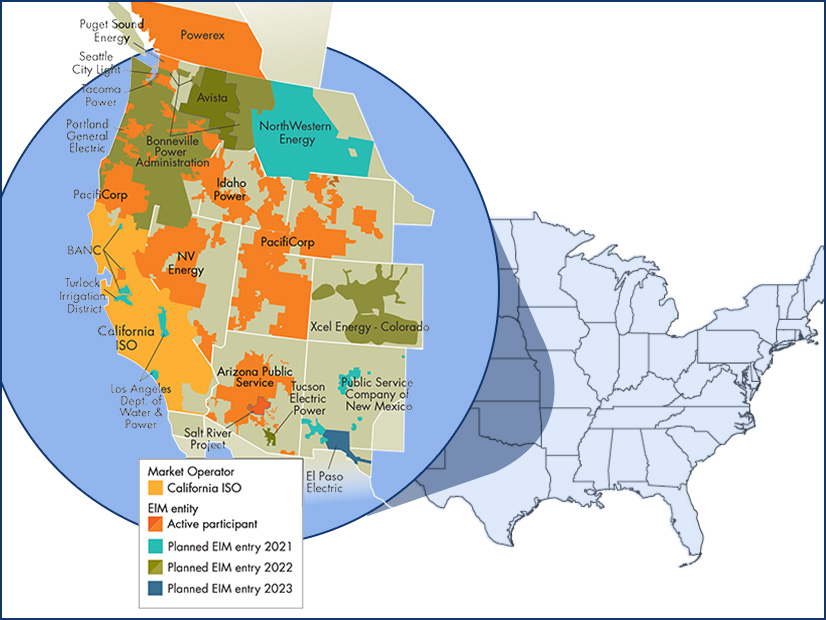In a rare move Monday, the Western Energy Imbalance Market Governing Body issued an advisory opinion that essentially rejected CAISO’s proposal to head off summer capacity shortfalls by limiting wheel-throughs during times of scarce supply and strained transmission.
The plan favors the interests of CAISO and California EIM entities, leaving out-of-state EIM members feeling disenfranchised, Governing Body members said.
“It’s not ready for approval,” Governing Body Vice Chair Anita Decker said.
The proposal is part of the ISO’s second phase of summer readiness initiatives that it fast-tracked this year to deal with issues identified in a root-cause analysis of last summer’s rolling blackouts. The EIM body last month endorsed Phase One measures without controversy. (See EIM Governing Body OKs Summer Readiness Measures.)
Other provisions of Phase Two dealing with export priorities and resource adequacy were less divisive, but the wheel-through provisions prompted strong protests from EIM entities.
“Numerous aspects of the final proposal provide disparate treatment between uses of CAISO transmission service to serve load in the CAISO BAA versus uses to serve load in an external BAA,” Powerex wrote to the Governing Body. “The final proposal stands in clear contrast to the non-discriminatory open access transmission service provided by other transmission service providers throughout the Western region.”
Four Southwest load-serving entities that participate or plan to participate in the EIM — Salt River Project, Arizona Public Service, Tucson Electric Power and NV Energy — said they “appreciate CAISO’s efforts to find short-term solutions while developing long-term policy proposals to address the wheeling concerns; however, the CAISO proposal is not fair, equitable or aligned with the intent of FERC’s open access requirement and non-discriminatory service.”
CAISO has said the wheel-through provisions are temporary and that it plans to start a stakeholder initiative soon to tackle the transmission constraints that contributed to the Aug. 14-15 blackouts. (See CAISO Says Constrained Tx Contributed to Blackouts.)
The Bonneville Power Administration, which is scheduled to go live in the EIM next year, also opposed the wheel-through provisions as unfair and inequitable.
EIM GB Comments
After a series of remarks in which they criticized the CAISO plan, the EIM governors passed a hastily crafted motion by a vote of 4-1, saying they would “not opine” on the wheel-through provisions but instead urge CAISO to seek a long-term solution to the issue and to quickly seek FERC advice.
Governing Body Member Valerie Fong noted none of the 14 participating EIM entities were “particularly thrilled” with the plan and that “the impacts of the proposed changes are reverberating throughout the EIM footprint.”
Decker, who cast the lone “no” vote on the motion because it did not go far enough, said limiting open transmission access through CAISO could jeopardize the EIM, a voluntary interstate trading market with participants throughout the West.
“There is an interest in a Western market, and if we can’t solve these kinds of things, [the hope for] a Western market becomes a dim light,” Decker said. She asked all the participants to “stay at the table … and try to hold the Western market together.’
At the beginning of the session, CAISO COO Mark Rothleder acknowledged the divisions but said the second phase of summer readiness initiatives are urgently needed.
“The wheel-through provisions of this proposal are more challenging and remain contentious, as it opens up foundational concepts of open access, native load protection and resource adequacy that are most relevant during times of scarce supply and transmission,” he said.
Nevertheless, he said, CAISO needs to pass the plan. The CAISO Board of Governors is set to vote on it Wednesday. If passed, it will likely be challenged before FERC, Governing Body members said. The commission requires at least 60 days to issue an opinion.
“It is essential to get this proposal in front of FERC to get guidance for this summer,” Rothleder said.



